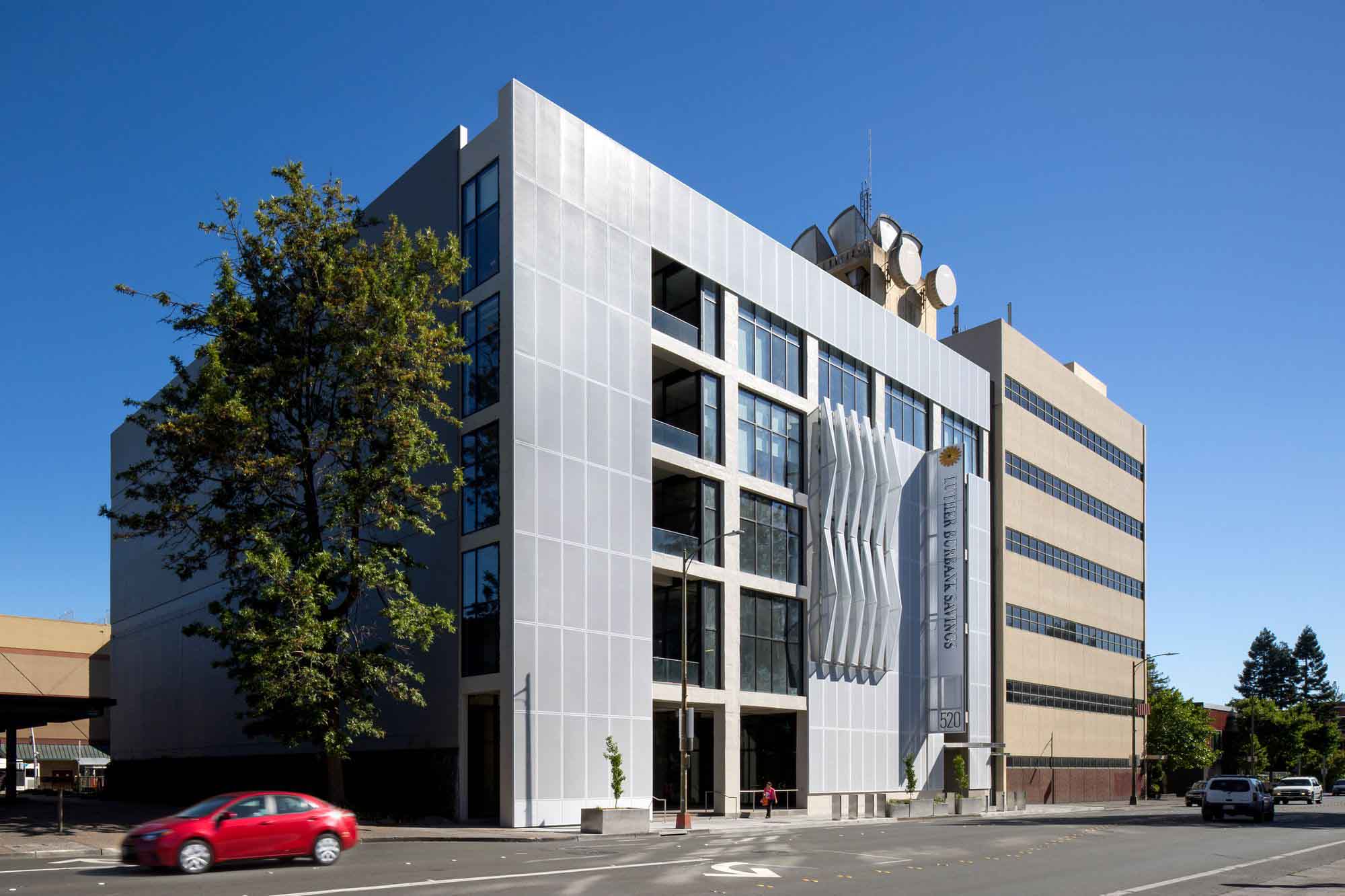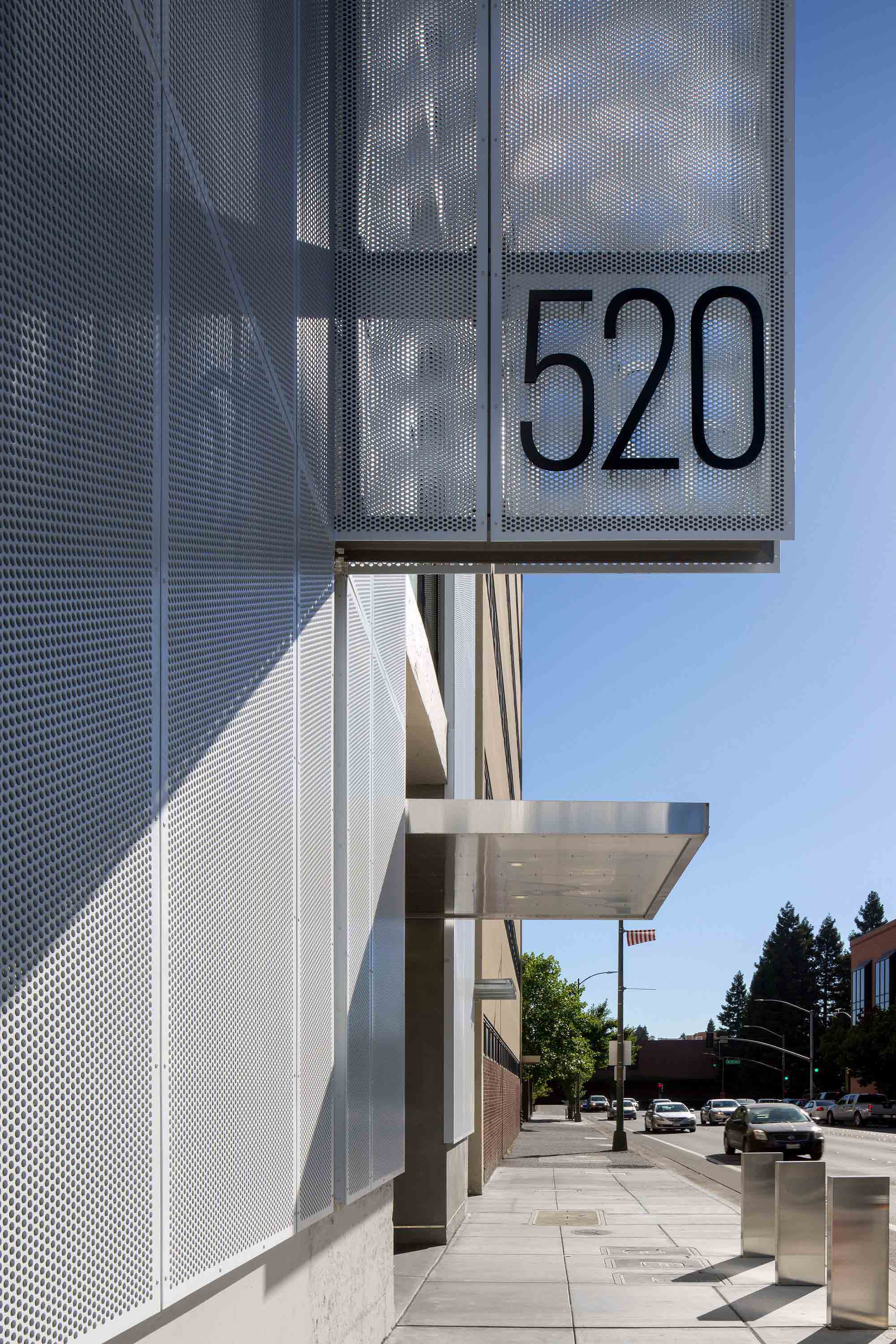Perforated Metal Panels Revitalize Santa Rosa Hub
- January 21, 2019
- 5 min
The Hole Objective
City planners in Santa Rosa, California began a transformation project. The goal was to modernize a dated fortress into an open and welcoming gathering spot.
The goal was to refurbish an abandoned AT&T switching station to create a revitalized core within the city’s downtown area. The new plan had to attract and accommodate multiple uses. These ranged from restaurants to banks, to offices, and the California Wine Museum (or “Wineseum”). Building owner, developer, and contractor Hugh Futrell Corporation partnered with TLCD Architecture to produce such an establishment.
Hugh Futrell Corporation sought to bring natural light into the space. However, the windowless cement building presented a unique set of challenges. To achieve their objective, they needed to find a way through the 18-inch exterior concrete walls.
To demolish the fortified wall, contractors needed five-foot diamond saw blades. Large portions of the building came tumbling down to form 17 openings. These openings, each averaging 250 square feet, were assembled into glass sections and balconies. The glass would require a sunscreen, and the next challenge would be finding the right one.

The Hole Solution
McNICHOLS® Perforated Metal was the solution. The material, both decorative and functional, was an ideal choice for the light filtration this project called for.
Lead Project Architect and TLCD Partner Don Tomasi, AIA included this material into an expansive metal façade. They used a total of 6,000 square feet of McNICHOLS® Perforated Metal panels for the project. The team selected Round Hole panels made from Aluminum Type 3003-H14, .250” Thick, 5/8 Round on 7/8 Staggered Centers, 1-1/2” Solid Margins- All Sides, 46.3% Open Area.
They applied approximately 150 perforated panels as cladding over the original cement façade and new glazed glass. The design specified coating the panels with a white, resin-based finish. This powder-coating added to the modern transformation and provided an intriguing contrast to the original industrial exterior.
McNICHOLS® Perforated Metal: The Key Element
Tomasi then decided to take the architectural Perforated Metal one step further. Counter to the previous bunker-style construction, he planned to fabricate the material into delicate-looking, origami-style vertical fins. His goal was to provide the building with unique branding and give it character.
Fabricator and installer B.T. Mancini Company assembled this feature inspired by Japanese paper art. Mancini turned metal into origami through a process that “took the 4- by 10-foot flat perforated metal panels and made a 120-degree bend diagonally down the length of the panel,” Project Manager Dave Jacks explained.
Before installing the fins, Mancini fabricated 2- by 2- by ¼- inch structural tube steel frames. Then, he positioned the frames at a 60-degree slope from the wall. Next, general foreman Rafael Velasquez mounted the frames to the exterior wall using Hilti KBTZ wedge anchors. Finally, Velasquez attached the angled panels to the bolted frames.
“We were not trying to hide the original building,” said Tomasi. “Instead we were putting a veil of metal over it to give it a contemporary face, and then added a sculptural element to bring the whole façade to life.”

The visual appeal of the cladding system also allowed the team to make functional modifications underneath. Mancini made use of the design by affixing McNICHOLS® Perforated panels to a two-piece set of 14-gauge sub-girts, thus hiding the system from view. This veil enabled him to plumb the linear surface of the concrete wall, which was as much as 1.5 inches out of alignment.
Ultimately, although removing the fortified exterior walls was difficult and expensive, the process allowed the team to actualize the updated façade and bring their vision to life.
The finished project is “a sculpture that looks different from every angle,” according to Tomasi.
Tomasi and his team completed the redevelopment of the building in February 2016. Tomasi expressed his satisfaction with the culmination and affirmed, “The redevelopment fits nicely into the urban fabric of downtown Santa Rosa.”
Featured Product
If you have any questions regarding Aluminum Perforated Metal, we are Inspired to Serve® you at 855.318.8791, [email protected], or via Live Chat on mcnichols.com.







